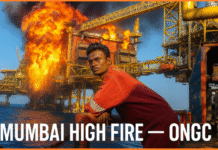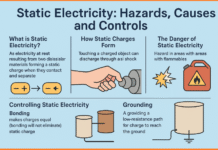The National Fire Protection Association (NFPA) provides standardized guidelines for the safe storage, handling, and use of flammable and combustible liquids. NFPA 30, the Flammable and Combustible Liquids Code, classifies these liquids primarily based on their flash point and boiling point, two critical properties that influence fire hazards.
Contents
Understanding Flash Point and Boiling Point
- Flash Point (FP): The minimum temperature at which a liquid gives off vapor in sufficient concentration to form an ignitable mixture with air near the surface.
- Boiling Point (BP): The temperature at which a liquid turns into vapor at atmospheric pressure.
The lower the flash point, the greater the fire hazard.
1. Flammable Liquids
According to NFPA 30, flammable liquids are those with a flash point below 100°F (37.8°C). These liquids are further divided into three categories:
Class IA
- Flash Point: Less than 73°F (22.8°C)
- Boiling Point: Less than 100°F (37.8°C)
- Examples: Ethyl ether, pentane
- Hazard Level: Extremely high; easily vaporize and ignite at room temperature
Class IB
- Flash Point: Less than 73°F (22.8°C)
- Boiling Point: At or above 100°F (37.8°C)
- Examples: Acetone, gasoline
- Hazard Level: Very high; volatile with slightly higher stability than IA
Class IC
- Flash Point: At or above 73°F and below 100°F (22.8°C–37.8°C)
- Examples: Xylene, turpentine
- Hazard Level: High; require slightly more heat to vaporize but still pose significant risk
2. Combustible Liquids
Combustible liquids have a flash point at or above 100°F (37.8°C) and are subdivided into three classes based on flash point ranges.
Class II
- Flash Point: At or above 100°F and below 140°F (37.8°C–60°C)
- Examples: Diesel fuel, mineral spirits
- Hazard Level: Moderate; less volatile but can ignite under certain conditions
Class IIIA
- Flash Point: At or above 140°F and below 200°F (60°C–93.3°C)
- Examples: Kerosene
- Hazard Level: Lower; may ignite if heated
Class IIIB
- Flash Point: At or above 200°F (93.3°C)
- Examples: Hydraulic oils, some lubricating oils
- Hazard Level: Minimal under normal temperature conditions; typically stable
Summary Table: NFPA 30 Liquid Classifications
| Class | Flash Point (°F) | Boiling Point (°F) | Type |
|---|---|---|---|
| IA | < 73 | < 100 | Flammable |
| IB | < 73 | ≥ 100 | Flammable |
| IC | ≥ 73 and < 100 | — | Flammable |
| II | ≥ 100 and < 140 | — | Combustible |
| IIIA | ≥ 140 and < 200 | — | Combustible |
| IIIB | ≥ 200 | — | Combustible |
Classification of liquids according to NFPA 30 is essential for fire prevention and ensuring safe industrial practices. Identifying the class of a liquid allows safety professionals to select appropriate storage containers, design safe facilities, and implement emergency procedures based on the associated fire hazards.





